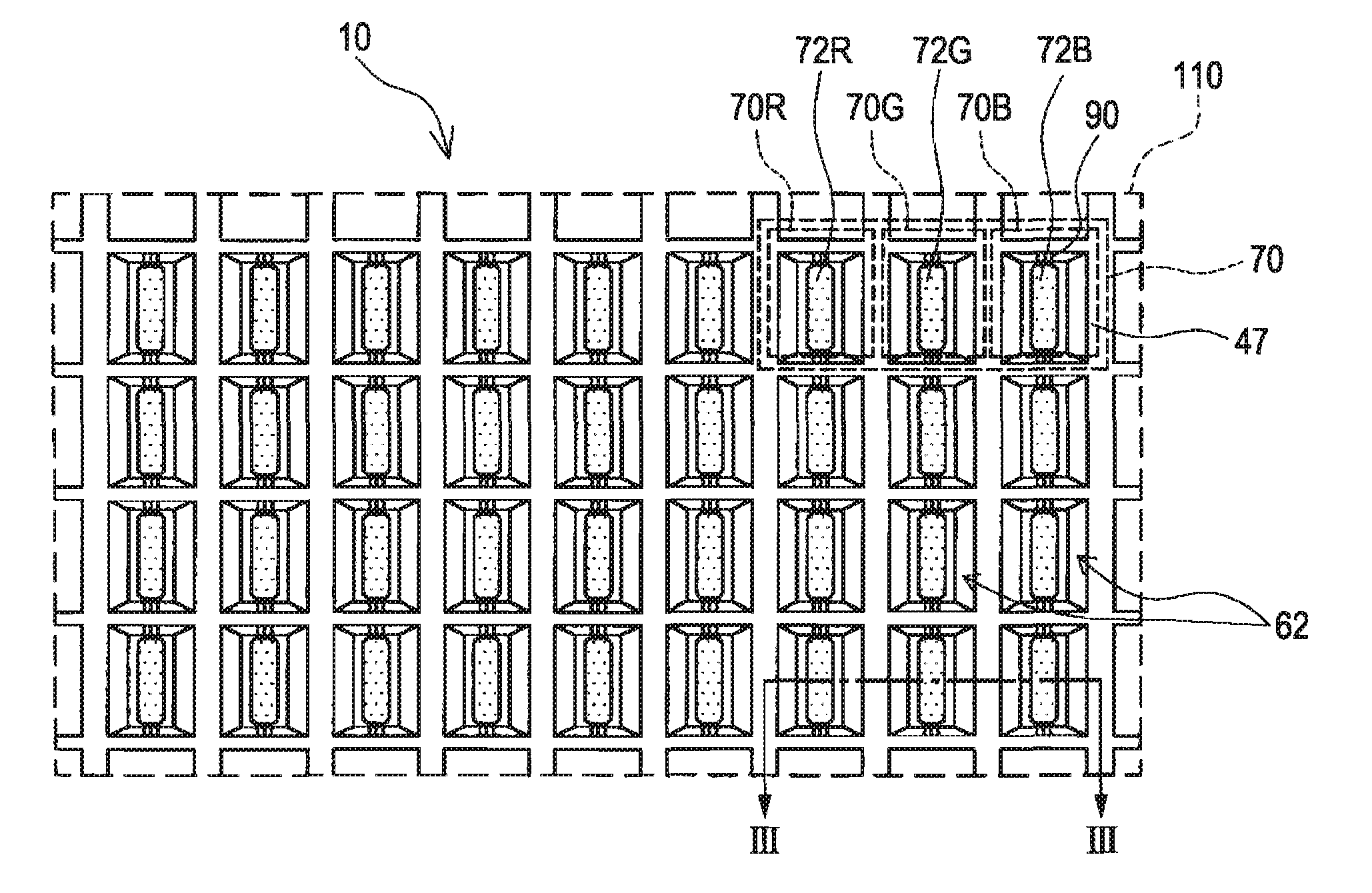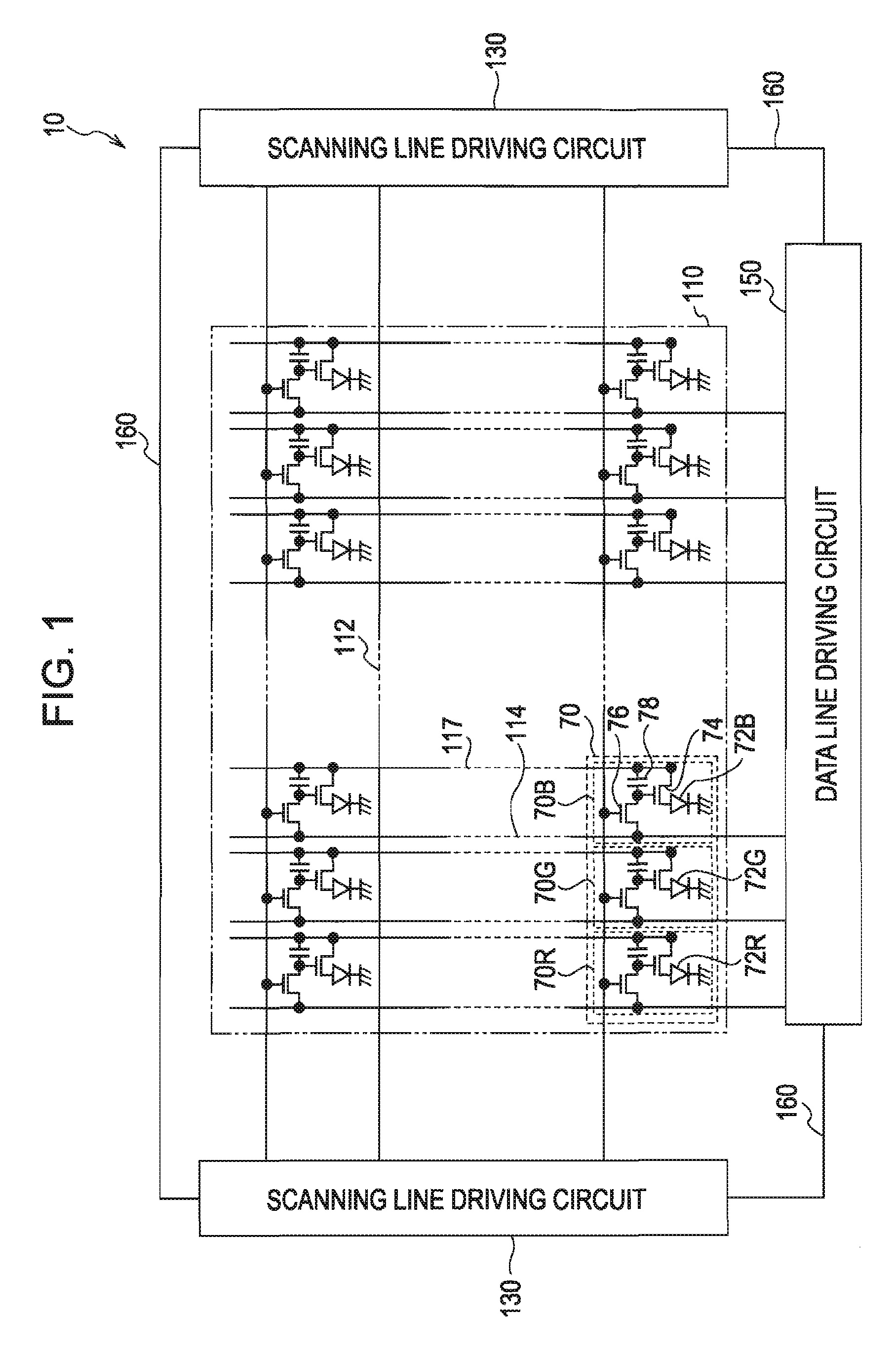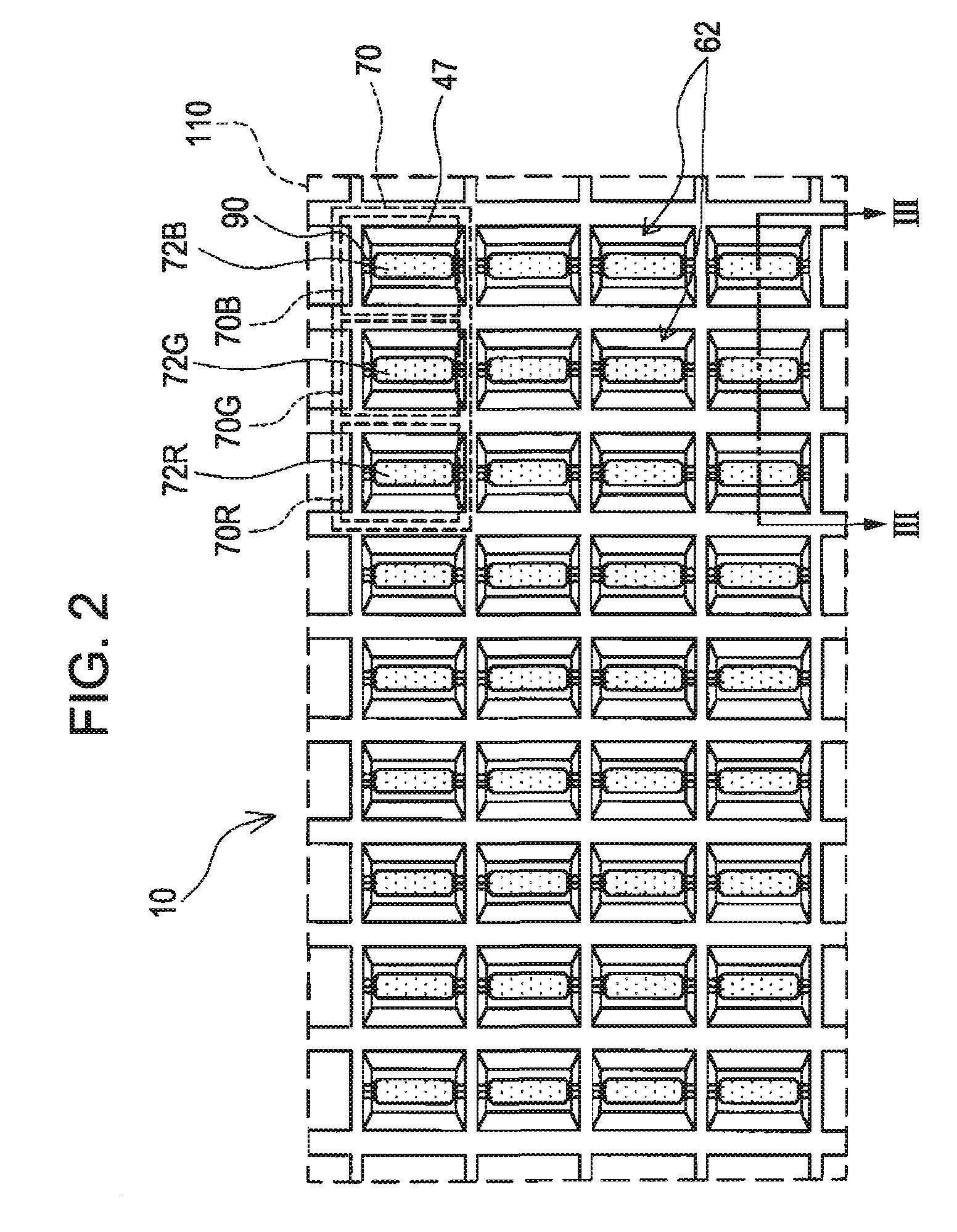Organic electroluminescent device and optical device
a technology of organic electroluminescent devices and optical devices, which is applied in the direction of discharge tubes/lamp details, discharge tubes luminescnet screens, incadescent body mounting/support, etc., can solve the problems of difficult to manufacture full color display panels, difficult to provide flat luminescent layers, and difficult to form low-molecular luminescent layers on large panels in uniform thickness. achieve the effect of increasing the numerical aperture of the organic electroluminescent device and increasing the numerical apertur
- Summary
- Abstract
- Description
- Claims
- Application Information
AI Technical Summary
Benefits of technology
Problems solved by technology
Method used
Image
Examples
first embodiment
[0055] Firstly, an organic electroluminescent device according a first embodiment of the invention will be described with reference to FIGS. 1 to 7. FIG. 1 is a block diagram illustrating an entire construction of an organic electroluminescent device according to a first embodiment of the invention.
[0056] Referring to FIG. 1, the organic electroluminescent device 10 is an active matrix type display device having an embedded driving circuit, and each pixel 70 included in the organic electroluminescent device 10 includes an organic electroluminescent element 72.
[0057] Data lines and scanning lines extending across each other in vertical and horizontal directions are arranged in the pixel area 110 of the organic electroluminescent device 10. The subpixels 70R, 70G and 70B provided in each intersection are arranged in a matrix form, and a set of three subpixels constitutes one pixel 70. The subpixels 70R, 70G and 70B have organic electroluminescent elements 72R, 72G, and 72B emitting ...
second embodiment
[0084] An organic electroluminescent device according to a second embodiment of the invention will now be described with reference to FIGS. 10 and 11. FIG. 10 is a plan view illustrating an organic electroluminescent device 300 according to a second embodiment of the invention.
[0085] Referring to FIG. 10, an organic electroluminescent device 300 includes a plurality of pixels 70 having an organic electroluminescent layer 50 formed using an inkjet method. The dry rate of the coating solution coated on the hollow 62 defined by the bank 47 is different between a group of pixels 70b arranged near the edges of the panels 301 and a group of pixels 70a arranged near the center of the panel 301 among a plurality of pixels 70 included in a pixel area. More specifically, even when a drying condition is accurately controlled as the size of the panel 301 becomes large, the dry rate of the coating solution of a group of the pixels 70b is relatively faster than that of a group of the pixels 70a....
PUM
 Login to View More
Login to View More Abstract
Description
Claims
Application Information
 Login to View More
Login to View More - R&D
- Intellectual Property
- Life Sciences
- Materials
- Tech Scout
- Unparalleled Data Quality
- Higher Quality Content
- 60% Fewer Hallucinations
Browse by: Latest US Patents, China's latest patents, Technical Efficacy Thesaurus, Application Domain, Technology Topic, Popular Technical Reports.
© 2025 PatSnap. All rights reserved.Legal|Privacy policy|Modern Slavery Act Transparency Statement|Sitemap|About US| Contact US: help@patsnap.com



